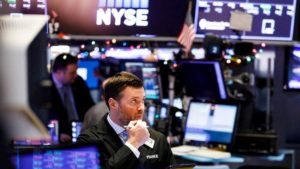WASHINGTON — The coronavirus has been circulating undetected and has possibly infected scores of people over the past six weeks in Washington state, according to a genetic analysis of virus samples that has sobering implications for the entire country amid heightening anxiety about the likely spread of the disease. The researchers conducted genetic sequencing of two virus samples. One is from a patient who traveled from China to Snohomish County in mid-January and was the first person diagnosed with the disease in the United States. The other came from a recently diagnosed patient in the same county, a high school student with no travel-related or other known exposure to the coronavirus. The two samples look almost identical genetically, said Trevor Bedford, a computational biologist at Fred Hutchinson Cancer Research Center in Seattle who announced the results of the research on Twitter late Saturday night.
“This strongly suggests that there has been cryptic transmission in Washington State for the past 6 weeks,” Bedford wrote. “I believe we’re facing an already substantial outbreak in Washington State that was not detected until now due to narrow case definition requiring direct travel to China.”
Officials in Seattle and King County on Sunday announced that two more people have tested positive for the coronavirus, which causes the disease named covid-19. Both patients are men in their 60s and are in critical condition. That brings the outbreak in Washington state to eight cases, six of them in King County, including the first coronavirus death in the United States, which was announced Saturday. Health officials in Washington state and across the nation said they expect numbers will continue to rise in the wake of the decision by the U.S. Centers for Disease Control and Prevention last week to widen testing guidelines. Over the weekend, new cases were reported in Americans who had recently traveled to South Korea and Italy, including one person in Rhode Island, the state’s first case. The health department in Santa Clara County, California, in the heart of Silicon Valley, announced three new coronavirus cases Sunday evening, bringing to seven the total number of cases there. The announcement gave few details about the cases.
The research is evidence that the highly contagious virus has eluded efforts to contain it through travel bans, quarantines and other interventions. The virus may have been spreading in parts of Washington state among people who didn’t realize they were infected by it
On Saturday, state and King County health officials reported a possible coronavirus outbreak at the Life Care Center in Kirkland, Washington, a long-term residential facility where more than 50 residents and staff are reportedly ill with symptoms associated with the novel virus. At least two of King County’s six confirmed cases are connected to the Life Care facility: a health-care worker in her 40s and a resident in her 70s.
Until a few days ago, the CDC had specific, narrow criteria for who should be tested for possible coronavirus infection — and most tests had to be sent to Atlanta due to faulty tests sent out to state labs. The focus was on people who had been to China or been in contact with someone who had traveled there. As a result, people with respiratory infections and fevers were not being widely tested for coronavirus. Last week, the CDC altered the criteria to expand testing.
“It’s almost impossible to get a damn test,” she said. The woman, a consultant who spoke on the condition of anonymity for fear of online harassment, said she normally commutes by train to downtown Washington to work but has self-quarantined since returning from Italy. Had she not chosen to do so, she said, “I could have been passing this all over D.C.”
A 30-year-old man who flew from virus-stricken Japan into Newark, New Jersey’s airport on Tuesday said he checked into NYU Langone’s emergency department in Cobble Hill, Brooklyn, with a 102-degree fever and cough. But because he did not meet the criteria as set at that time by the CDC — he lacked chest pains or shortness of breath — he was not tested for covid-19.
The man, who spoke on the condition of anonymity because he did not want to be associated with the outbreak, told The Washington Post he would be self-quarantined in his Brooklyn apartment for the next two weeks.
“My thought process was: Whatever I had, now it’s starting to get worse, so I better go to the hospital.” He wrote about his experience on the social media site Reddit.
After he arrived at the hospital, he was tested for flu strains and dozens of other microbes, all of which came back negative. A chest X-ray also returned negative. On Thursday he was informed that the CDC had not approved his case for testing because his symptoms were too mild.
He was sharing his story because he “wanted people to realize that there are probably more people like me.” His flight from Japan into Newark on Tuesday was full, he said.
“At no point am I saying ‘I have coronavirus.’ I’m just saying I have symptoms that are like it, and no one is testing me,” he said. “All NYU Langone Health facilities follow the testing guidelines and infection prevention protocols issued by the CDC and state and city Departments of Health,” Lisa Greiner, a spokeswoman for NYU Langone, said in a statement. “As the situation concerning COVID-19 remains fluid, we are continually aligning our testing protocols to ensure the safety and welfare of our patients and staff.” Although the World Health Organization has declined to describe covid-19 as pandemic, the illness has spread to every continent but Antarctica, and there is widespread agreement among infectious disease experts that a significant fraction of the human population could become exposed to it in the coming year or two.

